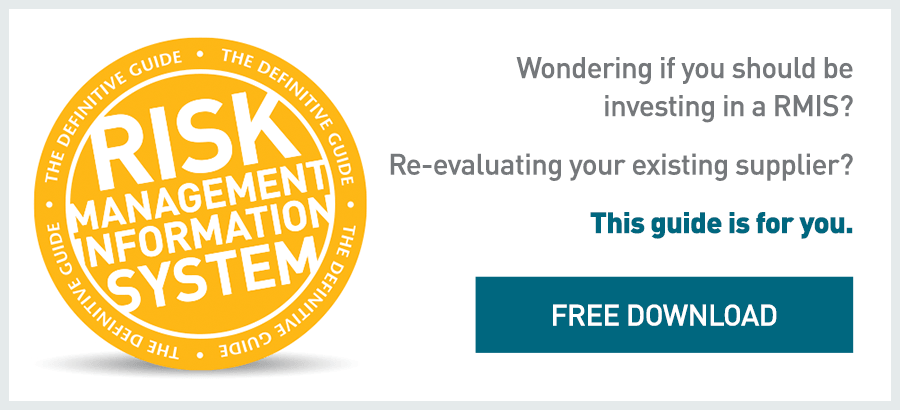
So you're planning on deploying a new risk management information system, or RMIS. That's great news! Today's risk management software can be a powerful tool for effecting positive organizational change, starting at the risk managers own desk and going right up to the C-suite.

Before you get started, however, it's a good idea to be aware of the factors that make for a smoothly executed and successful implementation. In my role as head of the Aon eSolutions professional services group, I've been involved in more than 300 implementations, from the highly complex to the relatively simple. This experience has given me some insights into best practices for effectively transitioning to a new RMIS, which I'm happy to share.
In the coming weeks, I will examine each of the eight success factors outlined below. Study and apply them, and you'll greatly improve the odds of a smooth, successful RMIS implementation.
If there's one theme that emerges from this list of eight success factors, it's the importance of establishing structure while also remaining flexible. It might seem like a paradox (structure and flexibility?), but as we'll see, it's an important mindset to understand and adopt.
1.) Manage the project collaboratively
Successful implementations are collaborative in nature. This means that from day one they have a project lead and resources from the RMIS company as you'd expect, and a project lead and support personnel from the client, which you may not expect. My next post will focus on best practices in project management.
2.) Define your success criteria clearly
Clearly defined success criteria allow the team to define the project plan around key stakeholder objectives. In an upcoming post, I'll discuss in more detail how the implementation team should build on the objectives set forth in the statement of work. For the moment, however, here are a few of the fundamental questions that should be answered when defining the criteria for success:
- Who are the actual stakeholders?
- What are they looking for a RMIS to provide?
- What are your needs in terms of security, workflow, and business rules?
- What processes do you expect to be streamlined?
- What types of reports do you want to generate and distribute?
- What are your key goals (for example, decreasing claim entry time; automating reporting; improving CMS reporting)?
- What team members will undergo training, and at what level?
3.) Capture your organizational hierarchy and reporting structures
Identifying your company's location (or, site) hierarchy and reporting structures is the backbone of any implementation. It seems simple enough, but we've found again and again that it's an important area for the client and vendor to examine in detail. In a future post, I'll discuss how your RMIS can support you in capturing distinct levels and identifying elements such as a location's legal entity, division, region, and accounting and operational status, among other identifiers.
4.) Focus on data mapping and data integrity
If you are bringing in data from external sources, coordinating the receipt and overall quality of the data is essential to keeping your project on track. This is a critical phase that incorporates data load setup, processing, balancing, error notification and auditing. An effective data conversion process is central to a successful transition. From our perspective of hundreds of data conversions involving thousands of sources, we will discuss how data mapping and data integrity have a profound impact on an implementation.
5.) Build it to scale
No one knows what the future holds. Consider whether or not the RMIS vendor has the organizational structure to support your operations and whether the risk management software can grow as you expand your needs. Is the system able to flexibly meet your changing business demands? Does its architecture provide the opportunity to configure client-specific modules, and scale their use as needed? Can it handle data volumes from all of your sources without the need to archive data?
6.) Deploy in phases
We encourage clients to plan on deploying portions of their risk management software over time. This enables your team to gain firsthand experience with each phase. Furthermore, performing lessons-learned studies between phases can help the collaborative team find better ways to meet stakeholder needs in upcoming phases. As a result, the latter phases will proceed more smoothly, your team will have fewer issues and you'll better address obstacles while they're manageable. Another plus: You'll build buy-in from stakeholders as they witness the benefits of the early phases.
7.) Encourage user acceptance
Engage soon-to-be end users early and often. Don't let the first time that they see or test their portion of the RMIS be during their go-live training session. Key users should be engaged in review of requirements and testing of the solution throughout the project to validate that pre-defined success criteria are being met prior to engaging all end users.
8.) Be flexible
As the saying goes, "The best-laid plans of mice and men oft go astray." A RMIS deployment is no exception to this rule. While a formal project management methodology will give structure to your development and delivery, it's equally important to go into a RMIS project with a flexible mindset. Understand what is essential to your success criteria and what is a nice-to-have. When combined with a collaborative approach to project management, the ability to configure your solution to meet your business needs, and the flexibility to allocate resources as needed, you'll have a good toolset for a successful implementation.
Lisa Dragon is vice president of global professional services for Aon eSolutions. Lisa works from the Chicago Aon eSolutions office. Email Lisa at lisa.dragon@aon.com.








 Before you get started, however, it's a good idea to be aware of the factors that make for a smoothly executed and successful implementation. In my role as head of the Aon eSolutions professional services group, I've been involved in more than 300 implementations, from the highly complex to the relatively simple. This experience has given me some insights into best practices for effectively transitioning to a new RMIS, which I'm happy to share.
Before you get started, however, it's a good idea to be aware of the factors that make for a smoothly executed and successful implementation. In my role as head of the Aon eSolutions professional services group, I've been involved in more than 300 implementations, from the highly complex to the relatively simple. This experience has given me some insights into best practices for effectively transitioning to a new RMIS, which I'm happy to share.





Comments (1)